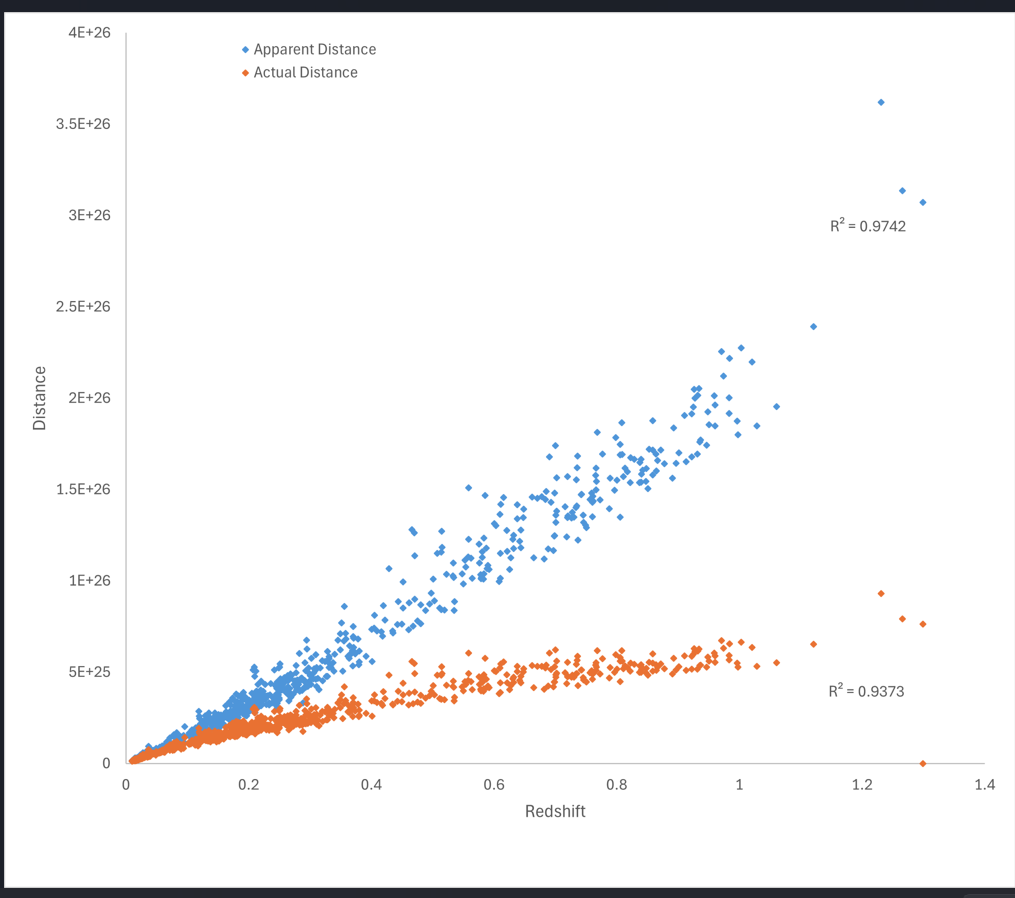Herewith the results of plotting 732 data points of Type 1a Supernova redshift and apparent magnitude distance, dawn from the Wolfram data depository: -
https://datarepository.wolframcloud.com/resources/Type-Ia-Supernova-Data/

In this diagram, we have calculated flux luminosity of Supernovae from measured Apparent Magnitudes and used the inverse square principle to derive Apparent Distances. This creates the blue points which seem to show that distances start to climb far beyond the Hubble Radius as redshifts rise past z = 0.6. The supernovae have high magnitudes which means they seem far too faint and hence appear strangely far away. This has led to the curious theoretical ‘fix’ of adding an accelerating expansion to the standard cosmological model, driven by some mysterious ‘dark energy’.
Hypersphere Cosmology attributes the huge Apparent Distances to Hyperspherical Lensing in which the small positive curvature of a universe finite and unbounded in space and time causes us to observe it in Stereographic Projection. In other words, these seemingly vast distances arise as an optical illusion in a spacetime that has a small curvature to it arising from its own gravity. When we apply a correction for this optical illusion, we obtain the Actual Distances shown by the orange points. (see equations 16 and 17)
From this we can easily see that at redshift z =1, which corresponds to halfway to Antipode, supernovae lie at 6E+25 metres from an observer, and that the Hypersphere of the Universe thus has an antipode distance of 1.2E+26 meters or 13 billion light years, and that a calculations of antipode distance from any of the Actual Distance points gives a value fairly close to this. The points shown cluster around ideal curves rather than lie exactly on them because of the known uncertainties and inaccuracies in magnitude measurements. We can measure redshifts to a much higher degree of certainty and accuracy.
Remarkably, applying the correction for hyperspherical lensing restores the relationship between redshift and distance that Hubble derived for low redshift galaxies. Hypersphere cosmology attributes this relationship to the small positive curvature of the universe which gives rise to a deceleration A which acts on light in transit. (see equation 6)
In Hypersphere Cosmology the small positive curvature of the universe gives rise to both cosmological redshift and hyperspherical lensing. The hypotheses of a gravitationally ‘flat’ universe expanding from a big bang and then undergoing an accelerating expansion become unnecessary, and most likely wrong. We should always seek the most simple and economical explanations.
See also https://www.specularium.org/hypersphere-cosmology/item/270-type-1a-supernovae-and-hypersphere-cosmology